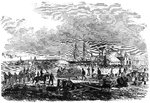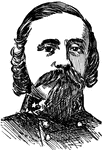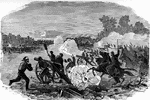New Jersey Troops
"The New Jersey troops crossing the Chesapeake Bay, in sixteen propellers, on their way to Washington,…

New York Seventh Regiment Marching Down Broadway
The secessionists tore up the railroad but the men of the eighth Massachusetts knew how to build railroads.…
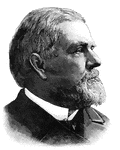
General John Newton
"General Newton, born in Norfolk, Va., August 24th 1823. He was graduated at the United States Military…

Night Burial of Colonel Garesche
"Night burial of Colonel Garesche, Chief of Staff to Major General Rosecrans, on the battlefield of…
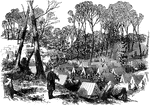
Camp of Ninth Massachusetts
"Camp of the Ninth Massachusetts Regiment in the woods, one mile from the Confederate fortifications,…
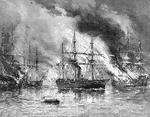
Norfolk Navy Yard Burning
The Norfolk Naval Yard, also known as the Norfolk Naval Shipyard became an integral shipyard during…
Occupation of Norfolk
"Occupation of Norfolk, VA., by the Federal troops- view of the city- Federal vessels at anchor." —Leslie,…

Northern Armies
"The enthusiasm of the Northern armies- re-enlistment of the Seventeenth Army Corps. Financial tests…

Officer's Tents
"New Jersey Camp at Arling, Va., designated as Camp Princeton in honor of one of the Revolutionary battle…
Ogeechee River
"Reconnoissance in the great Ogeechee River, near Ossabaw Sound, Ga., by the ironclad monitor Montauk,…
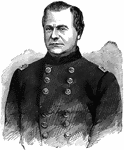
General Richard J. Oglesby
"General Oglesby, born in Oldham County, Ky., July 25th, 1824. Served in the Mexican War; was present…

Old Church
"Desperate skirmish at Old Church, near Tunstall's Station, VA., between a squadron of the Fifth United…
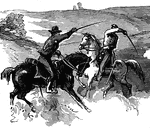
Old Church
"Desperate skirmish at Old Church, near Tunstall's Station, VA., between a squadron of the Fifth United…

Old Church
"Desperate skirmish at Old Church, near Tunstall's Station, VA., between a squadron of the Fifth United…
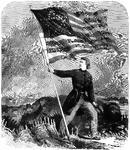
Old Flag
"The old flag again on Sumter- raised (on a temporary staff formed of an oar and boathook) by Captain…
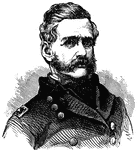
E. O. C. Ord
(1818-1883) Soldier that served in the Seminole war then led Union troop in the Civil War
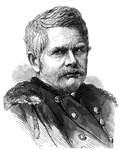
General Edward O. C. Ord
"General Ord, born in Cumberland, Md., October 18th, 1818, died in Havana, Cuba, July 22nd, 1883, was…

Oven
"'Fresh Bread!'- Impromptu oven built by the Nineteenth Regiment, New York Volunteers, in General Banks's…

Paducah, Kentucky
"View of the town of Paducah, Ky., at the confluence of the rivers Ohio and Tennessee, the Northern…

Paris
"Paris, capital of Bourbon County, situated on Stoner Creek, Ky., occupied by Morgan's Guerrillas in…

Landing at Parkersburg
"Landing of Federal troops at Parkersburg, Western Virginia. Parkersburg, Va., in 1861 was a thriving…

General Robert Patterson
"General Patterson, born in Cappagh, County Tyrone, Ireland, January 12th, 1792, died in Philadelphia,…

Fort Pawhatan
"The campaign on the James River- General Butler landing at Fort Pawhatan."— Frank Leslie, 1896

Battle of Pea Ridge
"Battle of Pea Ridge, Ark., fought March 6th, 7th and 8th, 1862, between the Federal forces, 13,000…
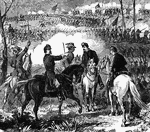
Battle of Pea Ridge
"Battle of Pea Ridge, Ark., fought March 6th, 7th and 8th, 1862, between the Federal forces, 13,000…

Battle of Pea Ridge
"Battle of Pea Ridge, Ark., fought March 6th, 7th and 8th, 1862, between the Federal forces, 13,000…

Battle of Pea Ridge
The Battle of Pea Ridge, also known as Elkhorn Tavern, was fought on March 7th and 8th in 1862 during…
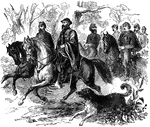
Battle of Pea Ridge
"General Asboth and staff at the Battle of Pea Ridge, Ark., March 6th-8th, 1862. The gallantry displayed…
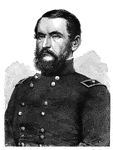
General John James Peck
"General Peck, born at Manlius, N. Y., January 4th, 1821, died at Syracuse, n. Y., April 28th, 1978,…
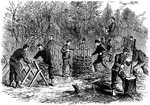
77th Pennsylvania Regiment
"Captain Muller's Battery Company of the Seventy-seventh Pennsylvania Regiment making fascines and gabions…

Invasion of Pennsylvania
"The invasion of Pennsylvania- working on the fortifications near Harrisburg, Pa., June 16th, 1863.…

Battle of Perryville
The Battle of Perryville, also known as the Battle of Chaplin Hills, was fought on October 8, 1862,…

Siege of Petersburg
"The Siege of Petersburg, Va. Charge of the second division, Ninth Army Corps, into the crater, July…
!["Siege of Petersburg. The [African American] infantry bringing in captured guns and cheers of the Ohio troops. When the [African American] troops found themselves within the works of the enemy no words could paint their delight. Numbers of them kissed the guns they had captured with extravagant satisfaction, and a feverish anxiety was minfested to get ahead and charge some more of the Confederate works. A number of the [African American] troops were wounded and a few killed in the first charge. A large crowd congregated, with looks of unutterable admiration, about Sergeant Richardson and Corporal Wobey, of the Twenty-second United States [African American] regiment, who had carried the colors of their regiment and been the first men in the works. Our artist gives a sketch of this gallant action."— Frank Leslie, 1896](https://etc.usf.edu/clipart/11800/11801/petersburg_11801_mth.gif)
Siege of Petersburg
"Siege of Petersburg. The [African American] infantry bringing in captured guns and cheers of the Ohio…
!["Siege of Petersburg- the Ninth Corps charging on the enemy's works after the explosion of the mine, July 30th, 1864. Immediately after the explosion of the mine a hundred cannons opened along the Federal front, and at half-past five the Ninth Corps charged, carrying the fort with a part of the line on each side. The Second Division, which was in the centre, advanced and carried the second line a short distance beyond the fort, and rested, holding ground with the utmost determination. It was at the time the [African American] Division, under General White, was pushed forward and ordered to charge and carry the crest of the hill, which would have decided the contest. The troops advanced in good order as far as the first line, where they received a galling fire, which checked them, and although quite a number kept on advancing, the greater number seemed to become utterly demoralized, part taking refuge in the fort, and the remainder running to the rear as fast as possible. They were rallied and again pushed forward, but without success, the greater part of the officers being killed or wounded."— Frank Leslie, 1896](https://etc.usf.edu/clipart/11800/11856/petersburg_11856_mth.gif)
Siege of Petersburg
"Siege of Petersburg- the Ninth Corps charging on the enemy's works after the explosion of the mine,…
!["Siege of Petersburg- the Ninth Corps charging on the enemy's works after the explosion of the mine, July 30th, 1864. Immediately after the explosion of the mine a hundred cannons opened along the Federal front, and at half-past five the Ninth Corps charged, carrying the fort with a part of the line on each side. The Second Division, which was in the centre, advanced and carried the second line a short distance beyond the fort, and rested, holding ground with the utmost determination. It was at the time the [African American] Division, under General White, was pushed forward and ordered to charge and carry the crest of the hill, which would have decided the contest. The troops advanced in good order as far as the first line, where they received a galling fire, which checked them, and although quite a number kept on advancing, the greater number seemed to become utterly demoralized, part taking refuge in the fort, and the remainder running to the rear as fast as possible. They were rallied and again pushed forward, but without success, the greater part of the officers being killed or wounded."— Frank Leslie, 1896](https://etc.usf.edu/clipart/13900/13915/petersburg_1_13915_mth.gif)
Siege of Petersburg
"Siege of Petersburg- the Ninth Corps charging on the enemy's works after the explosion of the mine,…
!["Siege of Petersburg- the Ninth Corps charging on the enemy's works after the explosion of the mine, July 30th, 1864. Immediately after the explosion of the mine a hundred cannons opened along the Federal front, and at half-past five the Ninth Corps charged, carrying the fort with a part of the line on each side. The Second Division, which was in the centre, advanced and carried the second line a short distance beyond the fort, and rested, holding ground with the utmost determination. It was at the time the [African American] Division, under General White, was pushed forward and ordered to charge and carry the crest of the hill, which would have decided the contest. The troops advanced in good order as far as the first line, where they received a galling fire, which checked them, and although quite a number kept on advancing, the greater number seemed to become utterly demoralized, part taking refuge in the fort, and the remainder running to the rear as fast as possible. They were rallied and again pushed forward, but without success, the greater part of the officers being killed or wounded."— Frank Leslie, 1896](https://etc.usf.edu/clipart/13900/13917/petersburg_2_13917_mth.gif)
Siege of Petersburg
"Siege of Petersburg- the Ninth Corps charging on the enemy's works after the explosion of the mine,…

Battle of Fort Pillow
Battle of Fort Pillow is also known as the Fort Pillow Massacre, fought on April 12, 1864 on the Mississippi…

The Pirate's Decoy
"'The Pirate's Decoy' Captain Semmes, of the Confederate privateer Alabama, decoying ships…

Pittsburg Landing in Tennessee
Pittsburg Landing is a town in Hardin County, Tennessee and is named for the industrial heritage of…
!["The Plantation Police, or Patrol, was an institution peculiar to the Slave States. It was a semi-military organization, raised and supported by the planters, but recognized by the old State authorities. Their principal duty was to visit the various plantations and patrol the roads at night, arresting all [African Americans] and others not having proper passes. The war, the President's proclomation, and the actual possession of most of the State of Louisiana by the Federal authorities, rendered these patrols doubly rigorous. Some of the [African Americans] submitted reluctantly. The [African American] in the foreground is a speciman of this class. He seems to yield to the superior force of a tottering power, satisfied that his day is at hand; others show the obsequious, submissive stamp- the [African American] satisfied with his lot if he is clothed and fed."— Frank Leslie, 1896](https://etc.usf.edu/clipart/11600/11643/plant-police_11643_mth.gif)
Plantation Police
"The Plantation Police, or Patrol, was an institution peculiar to the Slave States. It was a semi-military…
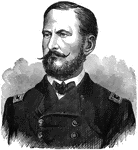
General Alfred Pleasonton
"General Pleasonton, born in Washington, D. C., June 7th, 1824, was graduated at the United States Military…

Sergeant Thomas Plunkett
Private Thomas Plunkett (1841 - 1885) was a color bearer during the Civil War. He carried the banner…

Pocotaligo Bridge
"The Federal troops under Generals Brannan and Terry driving the Confederates under beauregard across…

Police Headquarters
"Interior of the outbuilding attached to Marshal Kane's Police Headquarters, Holliday Street, Baltimore-…
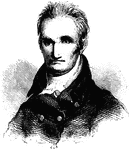
William Polk
(1816-1898) Military and Political leader of Texas. He raised Confederate troops in the West

Pontoon bridge
"General Fremont's Division crossing the Pontoon Bridge over the Shenandoah River in pursuit of the…
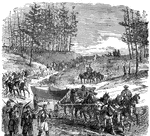
Pontoon Bridge
"The Pontoon bridge 'On The March'- the pontoon wagons on their way from Aquia Creek to the Rappahannock.…

General John Pope
"General Pope, born in Louisville, Ky., March 16th, 1822, was graduated from the United States Military…

Battle of Poplar Spring Church
"Grant's movements south of the James- Battle of Poplar Spring Church- the Ninth Corps passing Poplar…

Battle of Poplar Spring
"Grant's movements south of the James- Battle of Poplar Spring Church- gallant charge of a part of the…

Port Hudson
"The advance of Port Hudson. The baggage train of General Augur's division crossing the Bayou Montecino,…

Port Royal Ferry
"Successful attack of a detachment of the Federal forces, under General Stevens, supported by four gunboats…


